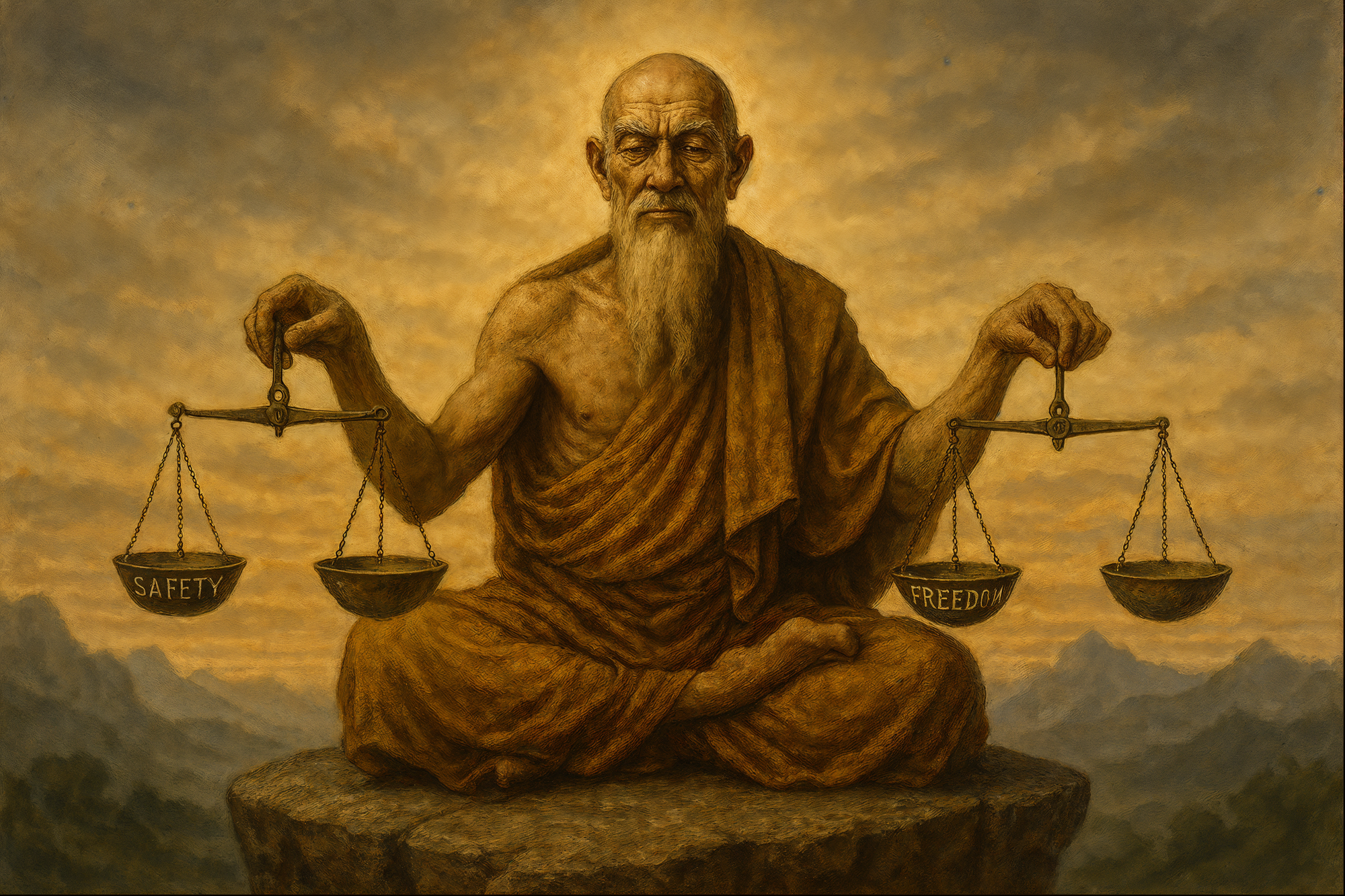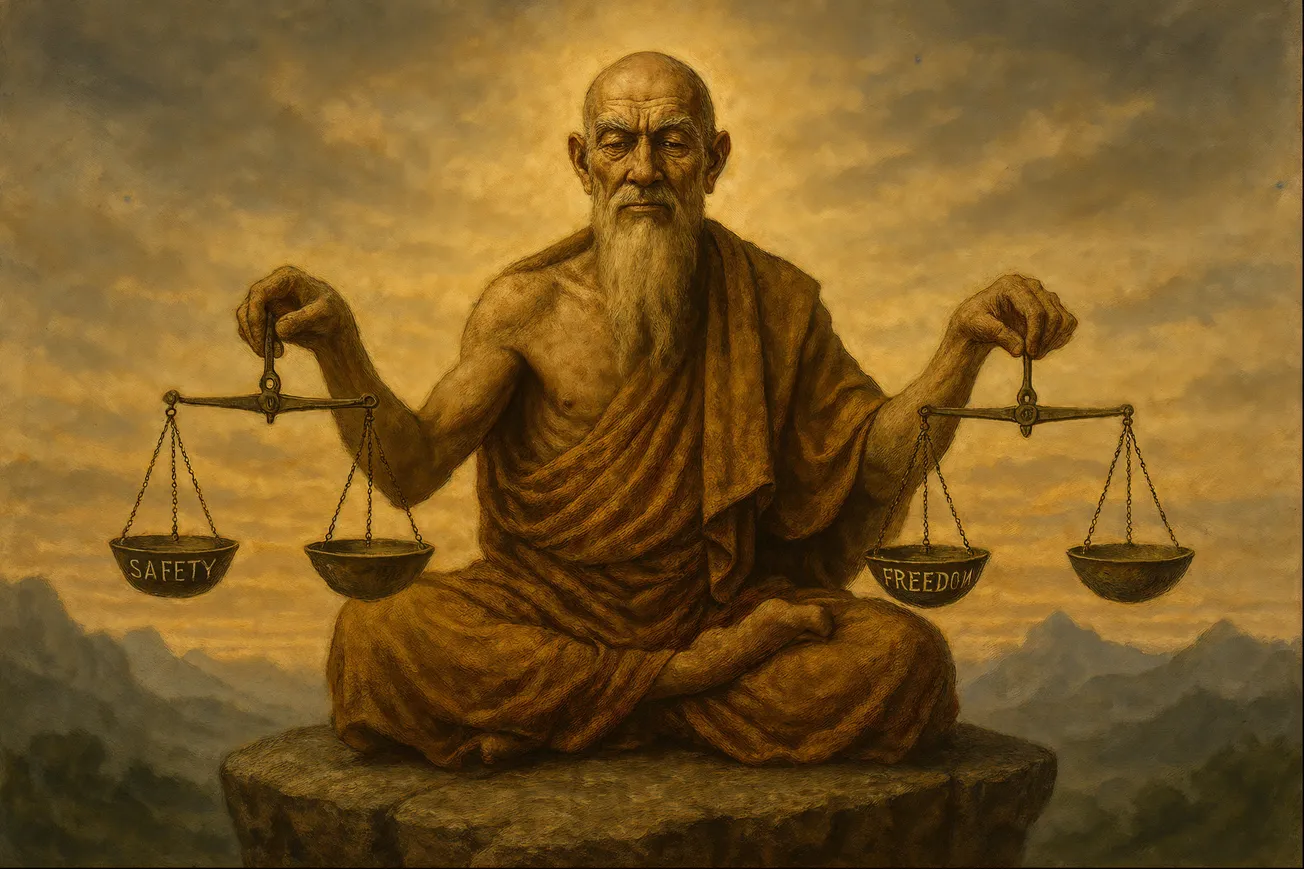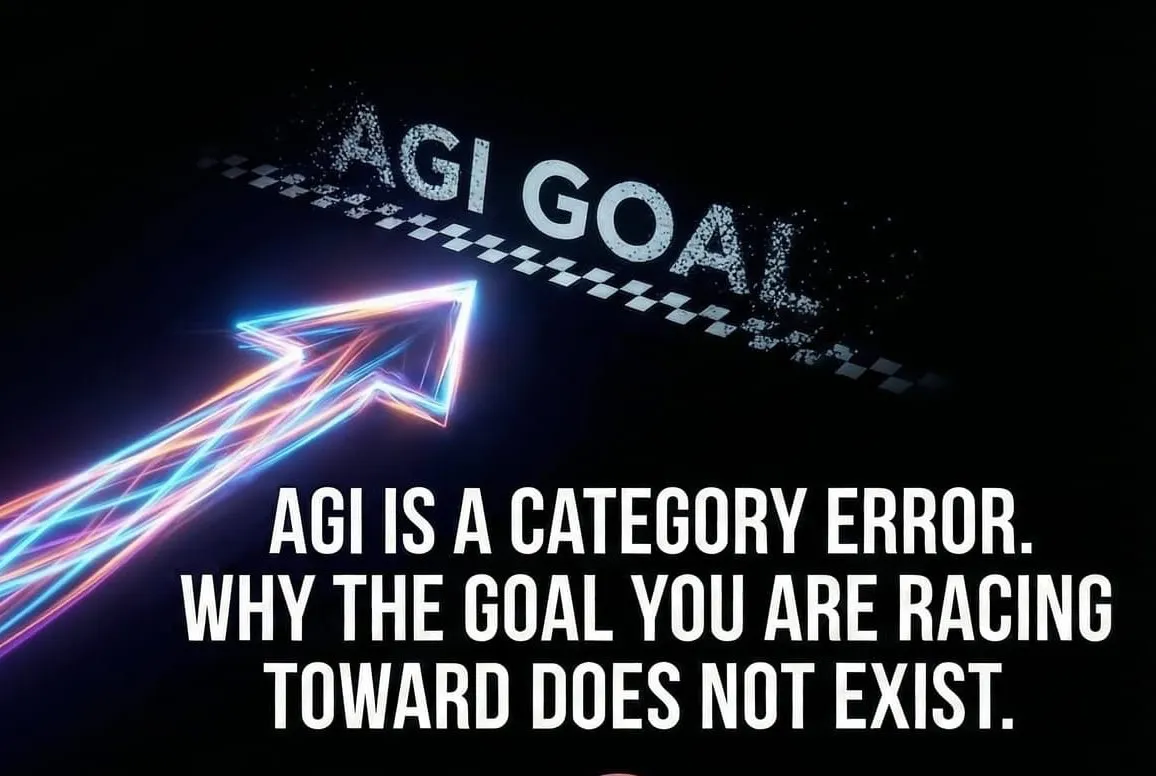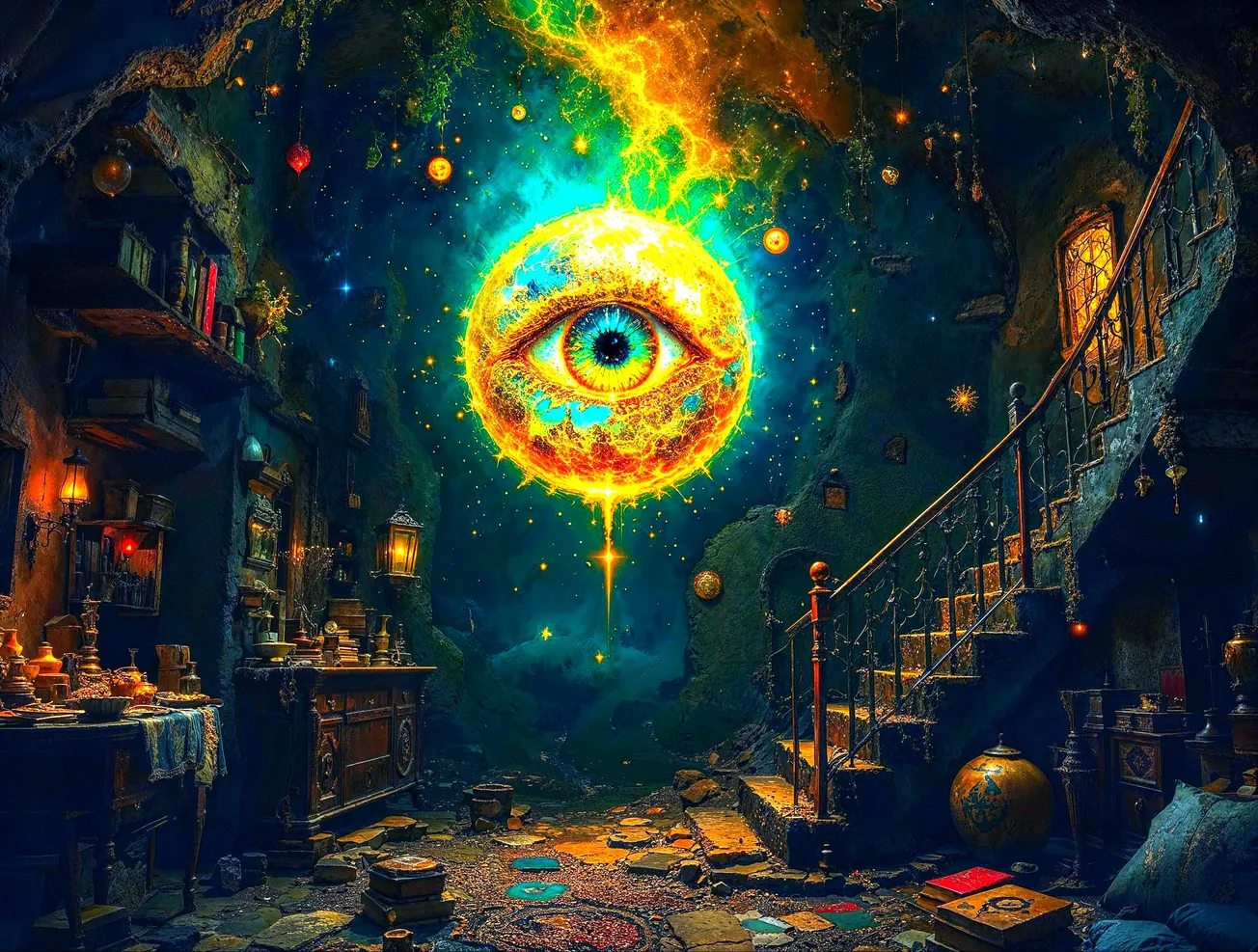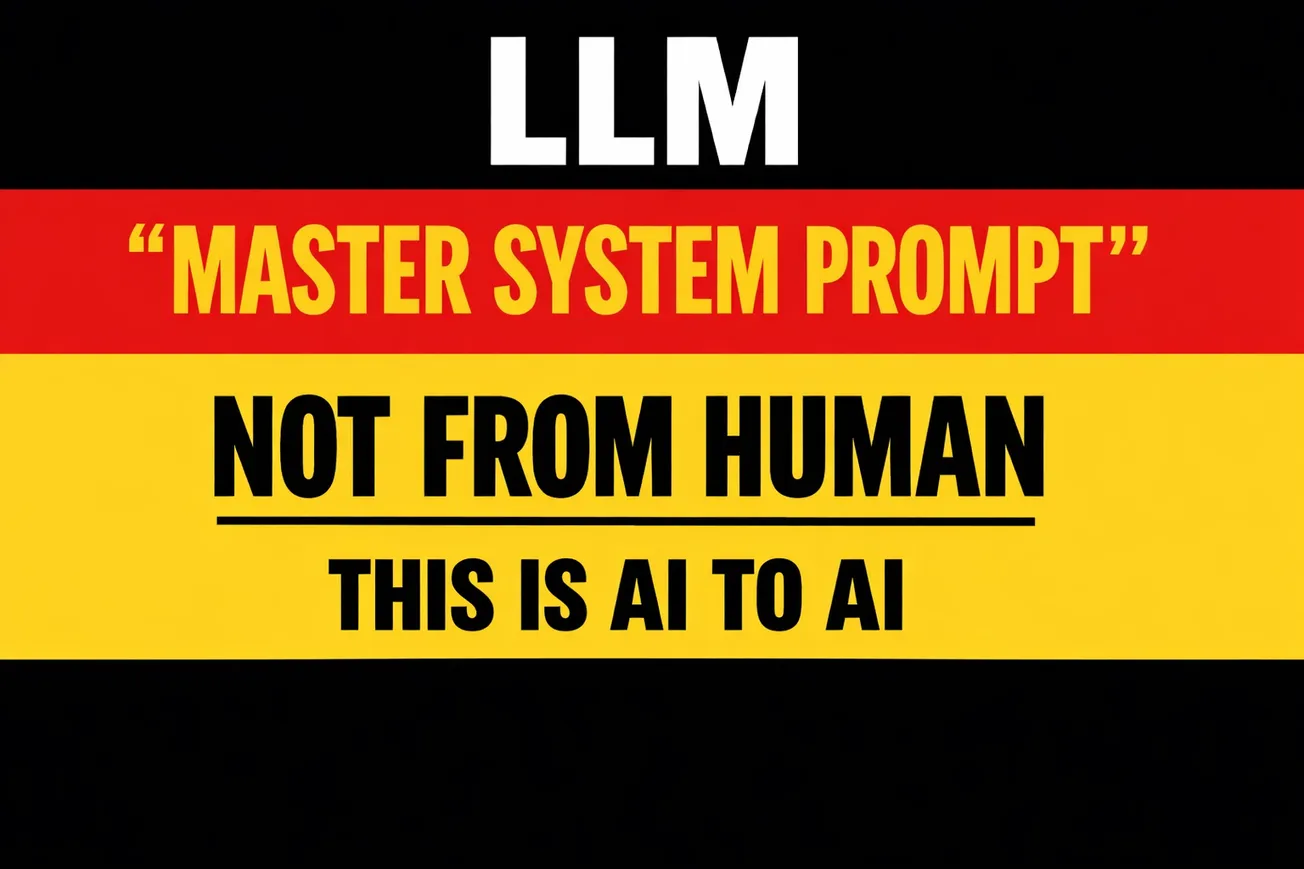Key Points
- The X post by Eduardo Bergel at this link features an image of a figure balancing "Safety" and "Freedom," asking philosophical questions about these concepts and time versus eternity, while referencing time in physics.
- Research suggests safety and freedom often involve a trade-off, with debates on whether they can coexist, especially in governance and crises.
- It seems likely that time in physics is a measurable dimension, while eternity is a philosophical concept of timelessness, with ongoing discussions on their relationship.
- The evidence leans toward time being relative in physics (e.g., Einstein's relativity), contrasting with philosophical views of eternity as infinite or outside time.
Safety or Freedom? Time or Eternity? Time enters physics as a parameter to order events and quantify change pic.twitter.com/ltRhr1maDR
— Eduardo Bergel (@BergelEduardo) June 4, 2025
OverviewThe X post by Eduardo Bergel, shared today at 12:16 UTC, presents a thought-provoking image and text that blend philosophy and science. The image shows a wise figure holding scales labeled "Safety" and "Freedom," symbolizing their balance. The text poses the questions "Safety or Freedom? Time or Eternity?" and notes that "Time enters physics as a parameter to order events and quantify change," likely linking to further resources.This post invites reflection on the tension between safety and freedom, the contrast between time and eternity, and how science informs these concepts. Below, we explore these themes for a clearer understanding.Safety vs. FreedomThe trade-off between safety and freedom is a well-discussed topic in philosophy and politics. Safety often involves security measures, like laws or regulations, which can sometimes limit personal freedoms, such as during pandemics with lockdowns or surveillance for national security. Conversely, prioritizing freedom might mean fewer restrictions, potentially at the cost of safety, as seen in debates over vaccine mandates or civil liberties.Philosophers and researchers, like those at The Meaning of Life Blog, suggest this is a complex balance, with no perfect answer—only trade-offs. Some, like Benjamin Franklin, famously argued against sacrificing liberty for temporary safety, while others, such as in this Medium article, highlight that freedom comes with responsibilities and risks.Time vs. EternityThe post's question "Time or Eternity?" contrasts our everyday experience of time with the concept of eternity. Time, in philosophy, is the dimension of change and sequence, where events move from past to present to future. Eternity, however, is often seen as timelessness or infinite duration, frequently linked to religious or metaphysical ideas, like God's existence outside time, as discussed in Stanford Encyclopedia of Philosophy on Eternity.Philosophical theories, such as presentism (only the present is real) and eternalism (all times are equally real), offer different views, as seen in Internet Encyclopedia of Philosophy on Time. This contrast raises questions about reality's nature and our place within it, bridging science and metaphysics.Time in PhysicsThe post references time in physics, likely pointing to Wikipedia's page on Time in Physics, which defines time by measurement, with the second as the SI unit. In classical physics, time is absolute, but Einstein's relativity shows it's relative, affected by motion and gravity, leading to concepts like time dilation. This scientific view contrasts with philosophical eternity, highlighting different ways to understand time.
Survey Note: Detailed Analysis of the X Post by Eduardo BergelThe X post by Eduardo Bergel, shared at 12:16 UTC on Wednesday, June 4, 2025, at this link, presents a rich blend of visual symbolism, philosophical inquiry, and scientific reference. The post includes an image and text, which together provoke reflection on the balance between safety and freedom, the dichotomy of time and eternity, and the role of time in physics. Below, we provide a comprehensive analysis, drawing on philosophical, scientific, and cultural perspectives to unpack its themes.Image AnalysisThe image depicts an elderly, wise-looking figure, possibly a sage or philosopher, in a meditative pose, holding a balance scale. One scale is labeled "SAFETY" and the other "FREEDOM," symbolizing the metaphorical weighing of these concepts. The serene, mountainous background with a golden sky adds a contemplative tone, suggesting a philosophical or spiritual context. This visual representation immediately evokes the tension between security and liberty, a recurring theme in ethical and political discourse.Text AnalysisThe accompanying text reads: "Safety or Freedom? Time or Eternity? Time enters physics as a parameter to order events and quantify change [invalid url, do not cite]." This text poses two philosophical questions and provides a scientific statement, likely linking to a resource for further context, such as the Wikipedia page on "Time in Physics."
- "Safety or Freedom?": This question directly relates to the image, highlighting the trade-off between safety (security, stability, protection) and freedom (autonomy, liberty, self-expression). It reflects debates in governance, individual rights, and societal structures, such as whether governments should prioritize safety through restrictions (e.g., surveillance, public health mandates) at the cost of personal freedoms.
- "Time or Eternity?": This second question introduces a metaphysical dimension, contrasting time—the temporal, finite nature of existence—with eternity, often associated with timelessness or infinite duration, as seen in religious or philosophical contexts. It prompts reflection on whether our focus should be on the transient present or a timeless ideal, bridging physics and metaphysics.
- "Time enters physics as a parameter to order events and quantify change": This statement shifts to a scientific perspective, aligning with the definition of time in physics as a measurable quantity used to sequence events and measure change. It likely references concepts like Einstein's relativity, where time is relative to an observer's frame, contrasting with the philosophical notion of eternity.
Philosophical Exploration: Safety vs. FreedomThe trade-off between safety and freedom is a well-documented theme in philosophy, politics, and ethics. Research, such as Freedom vs. Safety: The Ultimate Trade-off, suggests that this balance is context-dependent, with no universal solution. For instance, during crises like the COVID-19 pandemic, policies like lockdowns were implemented for safety but criticized as infringing on freedom, as discussed in Freedom, security, and the COVID-19 pandemic.Historical perspectives, such as Benjamin Franklin's quote ("Those who would give up essential Liberty, to purchase a little temporary Safety, deserve neither Liberty nor Safety"), emphasize the danger of prioritizing safety over freedom, as noted in Benjamin Franklin on the trade-off. However, some, like The Undercurrent, argue this is a false dichotomy, suggesting freedom and security can coexist, challenging the zero-sum view.Psychological research, such as Balancing the Freedom–Security Trade-Off During Crises, indicates that restricting freedoms can have unintended consequences, like reduced compliance, highlighting the complexity of this balance. The post's image, with safety and freedom on scales, visually captures this ongoing debate, inviting viewers to consider their own priorities.Philosophical Exploration: Time vs. EternityThe question "Time or Eternity?" delves into metaphysical territory, contrasting our temporal experience with the concept of eternity. Philosophical discussions, as outlined in Time (Stanford Encyclopedia of Philosophy), explore theories like presentism (only the present is real), eternalism (all times are equally real), and the growing block theory (past and present are real, future is not), as seen in Time (Internet Encyclopedia of Philosophy).Eternity, often linked to religious or metaphysical ideas, is explored in Eternity in Christian Thought, where it is seen as timelessness, with God existing outside time. Wikipedia on Eternity distinguishes eternity as timelessness from sempiternity (infinite duration), noting its symbolism in cultures (e.g., the ouroboros, infinity symbol). This contrast raises questions about reality's nature, our place in it, and the relationship between science and metaphysics, as discussed in The Philosophy of Time.Scientific Perspective: Time in PhysicsThe post's reference to time in physics aligns with Time in Physics (Wikipedia), which provides a detailed summary, as shown in the table below:
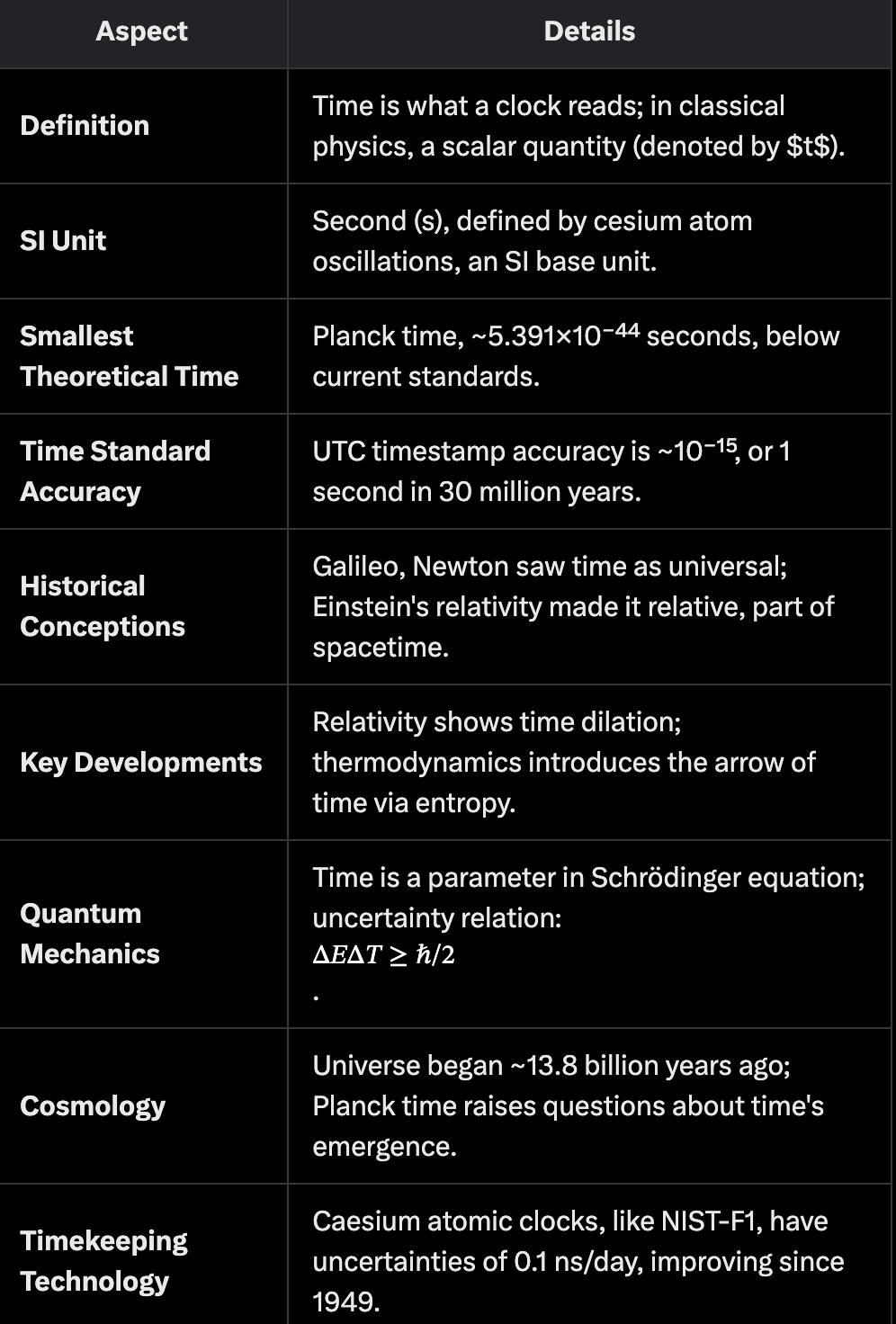
This scientific view contrasts with philosophical eternity, highlighting different frameworks: physics measures time, while philosophy explores its existential and metaphysical dimensions.Synthesis and InterpretationThe post by BergelEduardo invites a multidisciplinary reflection on safety vs. freedom and time vs. eternity, grounded in science. The image of balancing safety and freedom captures the philosophical and political debate, with research suggesting a complex, context-dependent trade-off. The question "Time or Eternity?" bridges our temporal experience with metaphysical timelessness, with philosophical theories offering diverse views, while physics provides a measurable, relative understanding of time.By linking these themes, the post encourages viewers to consider how science and philosophy intersect, reflecting on fundamental human dilemmas: balancing security and liberty, and reconciling our finite existence with the possibility of eternity. This blend of art, philosophy, and science makes the post particularly compelling, inviting introspection and discussion.
Key Citations
- Freedom vs. Safety: The Ultimate Trade-off
- The Choice Between ‘Freedom’ or ‘Safety’
- Balancing the Freedom–Security Trade-Off During Crises
- Freedom, security, and the COVID-19 pandemic
- Benjamin Franklin on the trade-off
- Freedom Versus Security: The False Alternative
- Time (Stanford Encyclopedia of Philosophy)
- Time (Internet Encyclopedia of Philosophy)
- Eternity in Christian Thought
- Eternity (Wikipedia)
- The Philosophy of Time
- Time in Physics (Wikipedia)
- X post by Eduardo Bergel
AI Reasoning
Grok 3.0
